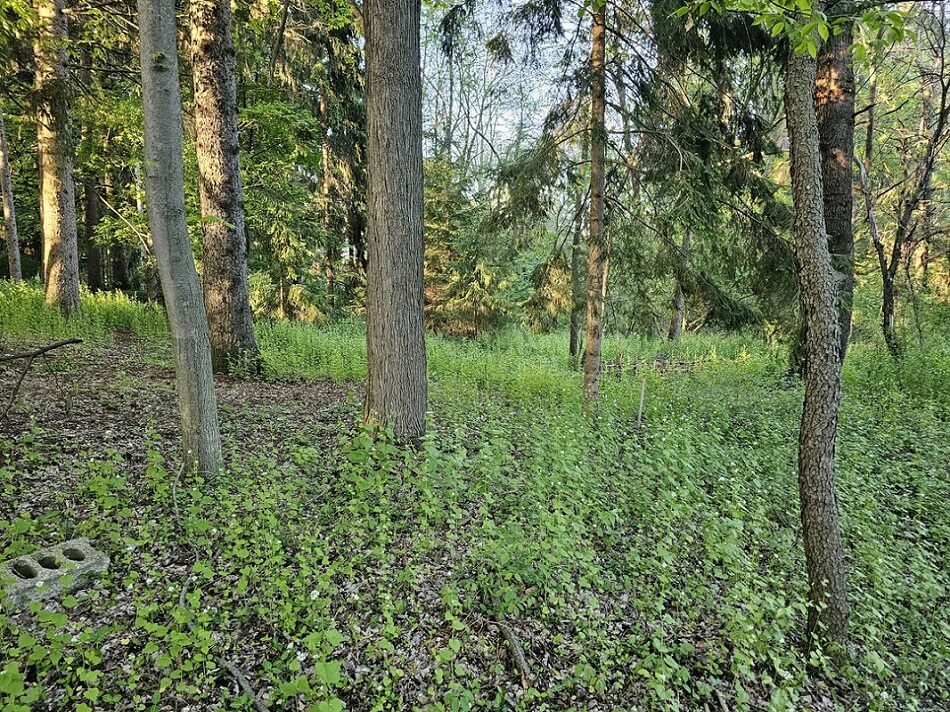A plant-savvy gardener was shocked and dismayed to look into their neighbor's yard and realize it was entirely covered with a highly invasive plant.
They posted a photo of the lush green yard — which might look innocent enough to the unknowing eye — in the subreddit r/NativePlantGardening, where they wrote that the neighbors insisted that they "love their ground cover."

Commenters quickly identified the plant as garlic mustard, which is "one of the worst invaders of forests in the American Northeast and Midwest," according to New York Invasive Species Information Network.
One commenter put it simply: "That's horrifying."
Invasives are everywhere, often hiding in plain sight and smothering landscapes whose owners don't know the difference between an invasive plant and a native one. From common names like English ivy to Japanese knotweed, several species of bamboo, and more, what looks like innocent ground cover might actually be deadly for local flora and fauna.
And garlic mustard is unique among invasives — but not in a good way. It's one of the only non-native species that's been able to successfully dominate forest understories. One commenter shared that it took them over five years to clear it out of their backyard.
Fortunately, it's also edible. A member of the same family as kale and broccoli, garlic mustard is nutritious and easy to prepare, whether it's in a horseradish-like sauce or blanched and sauteed.
"I've been going to war with it in my own yard," one person wrote. "Last night I made a lovely pesto!"
Another emphasized the missed opportunity to eliminate invasives and get a delicious meal out of it. "It's such a shame when you realize the extent of underutilized edibles we have here in the States," they wrote. "So many already known and used by various native American groups just left totally ignored and unadopted."
Whether it's resource-efficient native plants, a vegetable garden, or simply non-invasive ground cover, there are far better ways to rewild your yard than to let an invasive take control.
But if you do find yourself in that situation, just reach for the food processor.
Join our free newsletter for easy tips to save more, waste less, and help yourself while helping the planet.









